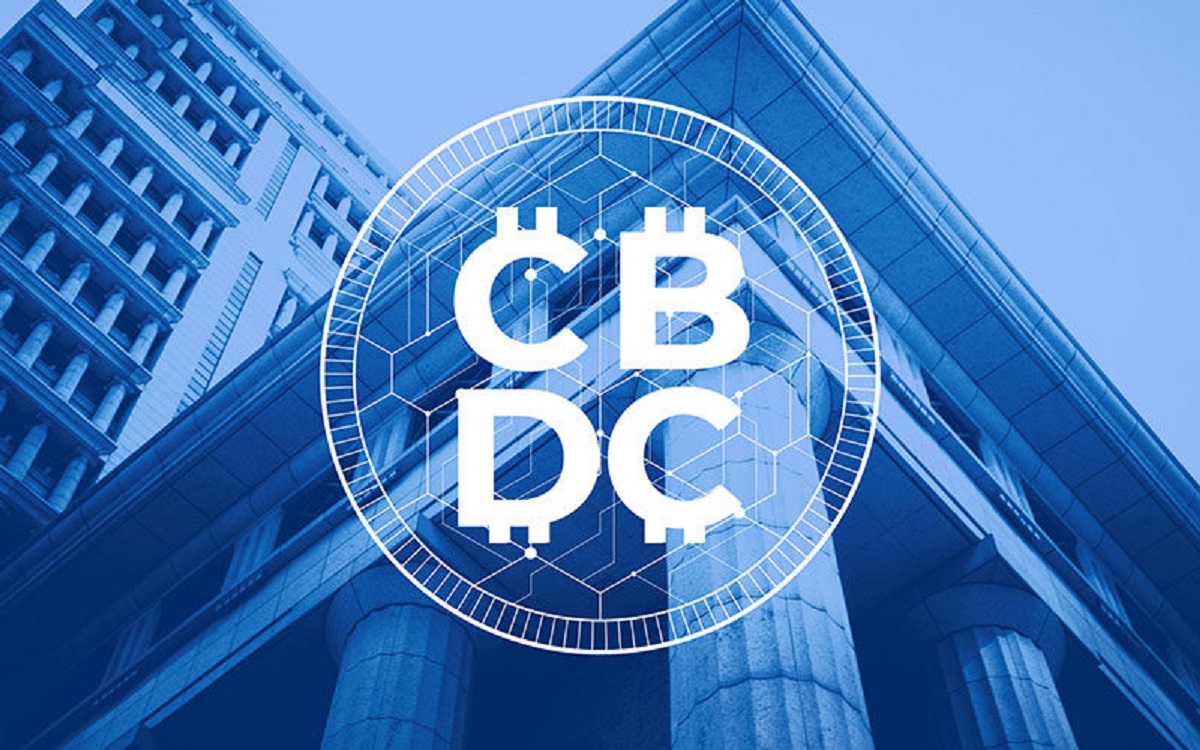Introduction
Welcome to the world of digital currency! In today’s fast-paced digital era, the concept of currency has evolved beyond physical coins and notes. With the rise of technologies like blockchain, digital currencies have gained significant traction and are transforming the way we perceive and transact with money.
Digital currency, also known as cryptocurrency, is a form of virtual or digital money that uses cryptography for secure transactions and operates independently of traditional banking systems. Unlike traditional fiat currencies issued by governments, digital currencies are decentralized, meaning that they are not controlled or regulated by any central authority.
The emergence of digital currency has sparked a revolution in financial systems and has the potential to disrupt various industries, including finance, e-commerce, and even traditional banking. As more individuals and businesses adopt digital currencies for transactions, it is crucial to understand their impact on the balance sheet.
In this article, we will delve into the world of digital currency on the balance sheet, exploring its definition, significance, and how it affects financial records. We will also explore the challenges and risks associated with managing digital currency assets on the balance sheet.
So, whether you are a business owner, an accountant, or simply curious about the evolving digital landscape, join us as we journey into the realm of digital currency on the balance sheet.
Definition of Digital Currency
Digital currency refers to a type of virtual or digital money that exists solely in electronic form. It is not tied to any physical asset or backed by a central government or financial institution. Instead, digital currencies operate on decentralized networks, often utilizing blockchain technology to enable secure and transparent transactions.
At the core of digital currencies is cryptography, which ensures the security and integrity of the transactions. Cryptocurrencies like Bitcoin, Ethereum, and Litecoin are some of the most well-known examples of digital currencies. These cryptocurrencies use complex mathematical algorithms to regulate the creation of new units and verify the transfer of funds.
One of the primary features of digital currency is its ability to facilitate peer-to-peer transactions without intermediaries such as banks or payment processors. This enables faster and cheaper cross-border transactions, as well as increased financial inclusion for individuals who may not have access to traditional banking services.
Another significant characteristic of digital currency is its limited supply. Many cryptocurrencies have a predetermined maximum supply, meaning that there is a cap on the total number of units that can ever be created. This scarcity contributes to the perceived value of these digital assets.
It’s important to note that not all digital currencies are created equal. Some digital currencies, like stablecoins, are designed to maintain a stable value by pegging their price to a traditional currency, such as the US dollar. Others, known as utility tokens, are used to access specific services or platforms.
Overall, digital currency represents a technological advancement in the way we exchange and store value. It offers a decentralized alternative to traditional fiat currencies and has the potential to revolutionize financial systems and transactions on a global scale.
Why Digital Currency Matters
Digital currency has emerged as a significant force in the global financial landscape, and its importance cannot be understated. Let’s explore why digital currency matters and the impact it has on various aspects of our lives.
1. Financial Inclusion: Digital currency has the potential to provide financial services to people who are currently unbanked or underbanked. With a mobile phone and internet access, individuals can participate in the digital currency ecosystem, opening up access to banking, savings, and investment opportunities.
2. Lower Transaction Fees: Traditional banking systems often come with high transaction fees, especially for international transfers. Digital currencies enable low-cost transactions, eliminating the need for intermediaries and reducing costs for individuals and businesses.
3. Speed and Efficiency: Digital currency transactions are processed faster compared to traditional banking systems. Cross-border transactions that may take several days using traditional methods can be completed in a matter of minutes or hours with digital currencies.
4. Security and Privacy: Digital currencies utilize advanced cryptographic techniques to secure transactions and protect user identities. The decentralized nature of digital currencies also provides individuals with greater control over their financial information and reduces the risk of fraud or identity theft.
5. Global Accessibility: Unlike traditional currencies that are subject to geographic restrictions and exchange rate fluctuations, digital currencies are accessible to anyone with an internet connection. This has the potential to create a more inclusive and connected global economy.
6. Innovation and Technological Advancement: Digital currency has spurred innovation in various fields, such as blockchain technology. The underlying technology behind cryptocurrencies has the potential to revolutionize industries beyond finance, including supply chain management, healthcare, voting systems, and more.
7. Store of Value: Digital currencies, particularly those with limited supply, provide an alternative store of value in an era of economic uncertainty. Some individuals view digital currencies as a hedge against inflation and as a diversification option for their investment portfolios.
8. Decentralization and Trust: The decentralized nature of digital currencies reduces reliance on central authorities and intermediaries, promoting a higher level of trust and transparency in transactions. Blockchain technology, which powers many digital currencies, ensures that transactions are recorded in a secure and immutable manner.
As digital currency adoption continues to grow, it is clear that this innovation holds tremendous potential to reshape the future of finance and beyond. It offers new opportunities for individuals and businesses, promotes financial inclusion, and empowers individuals to take control of their financial lives.
The Role of Digital Currency on the Balance Sheet
As digital currency gains traction, businesses and individuals alike are grappling with how to account for these assets on their balance sheets. The increasing use of digital currencies has led to the recognition that they are valuable assets that need to be properly reflected in financial statements.
On the balance sheet, digital currency is classified as an intangible asset, similar to other forms of intellectual property or goodwill. It represents an asset with future economic benefits that can contribute to the value of the organization.
The role of digital currency on the balance sheet goes beyond just being an asset. It serves as a means of diversifying investment portfolios and hedging against traditional currency risks. Companies that hold digital currency may also use it for payment settlement or as a medium of exchange in their operations.
Furthermore, the inclusion of digital currency on the balance sheet offers transparency and accountability. It provides stakeholders, including investors and regulators, with a clearer understanding of the financial position and potential risks associated with holding digital assets.
However, the role of digital currency on the balance sheet also poses challenges. One of the main challenges is accurately valuing digital currency. The volatility and lack of a standardized valuation framework make it challenging to determine the fair value of digital assets. Companies may need to rely on external sources or use alternative valuation methods to arrive at a reasonable estimate.
Another key consideration is the impact of fluctuations in the value of digital currency on financial reporting. Companies need to carefully assess whether such fluctuations need to be recognized as gains or losses in their financial statements, taking into account applicable accounting standards and regulations.
Additionally, managing the security and custody of digital currency is of paramount importance. Companies need robust internal controls and security measures to protect their digital assets from theft or unauthorized access. The loss or hacking of digital currency can have significant consequences for a company’s financial position and reputation.
Overall, the role of digital currency on the balance sheet is multi-faceted. It represents an intangible asset with potential economic benefits, while also introducing challenges related to valuation, accountability, and security. As the use of digital currencies continues to evolve, businesses must navigate these complexities to ensure accurate and transparent financial reporting.
Recording Digital Currency on the Balance Sheet
Recording digital currency on the balance sheet requires careful consideration and adherence to accounting principles. Here are the key steps involved in recording digital currency on the balance sheet:
1. Classification: Digital currency is typically classified as an intangible asset on the balance sheet. This is because it lacks physical form and is not considered a financial instrument or cash equivalent.
2. Initial Recognition: When digital currency is acquired, it needs to be recognized on the balance sheet at its fair value on the date of acquisition. Fair value can be determined through various methods, such as using market prices from reputable exchanges or employing valuation models.
3. Subsequent Measurement: After initial recognition, digital currency is usually measured at fair value. However, there may be instances where digital currency is accounted for at cost or amortized cost, depending on company policies and applicable accounting standards.
4. Valuation Adjustments: Any changes in the fair value of digital currency from the date of acquisition are typically recognized as unrealized gains or losses in the financial statements. These valuation adjustments are recorded in the income statement or other comprehensive income, depending on the accounting treatment chosen.
5. Disclosure: It is essential to provide sufficient disclosure in the financial statements to ensure transparency and enable stakeholders to understand the company’s exposure to digital currency. This includes disclosing the valuation techniques used, the fair value hierarchy, and any significant risks associated with holding digital currency.
6. Impairment: If there is an indication of impairment in the value of digital currency, such as a significant decline in its fair value, an impairment loss should be recognized in the income statement. Impairment is evaluated regularly and any necessary adjustments are made to reflect the recoverable amount of the digital currency.
7. Presentation: The balance sheet should clearly and accurately present the digital currency as an intangible asset, providing relevant details such as the carrying amount, fair value, and any associated liabilities or restrictions on use.
It is important for companies to keep abreast of regulatory guidance and accounting standards in their jurisdiction to ensure compliance in recording digital currency on the balance sheet. Additionally, engaging with qualified professionals, such as accountants or auditors with knowledge in digital currency accounting, can provide valuable guidance and expertise.
By following proper accounting practices and providing comprehensive disclosure, companies can accurately reflect the value of their digital currency holdings on the balance sheet, thereby enhancing transparency and maintaining the trust of stakeholders.
Valuing Digital Currency on the Balance Sheet
Valuing digital currency on the balance sheet can be a complex task due to its inherent volatility and lack of a standardized valuation framework. The accurate valuation of digital currency is crucial for presenting a fair and transparent financial picture. Here are key considerations for valuing digital currency on the balance sheet:
1. Fair Value Measurement: Digital currency is typically valued at its fair value. Fair value represents the price that would be received to sell an asset in an orderly transaction between market participants at the measurement date. Companies can use market prices from reputable exchanges or valuation models to determine the fair value.
2. Market-Based Valuation: Valuing digital currency based on market prices can be straightforward if there is an active and liquid market. In such cases, the company can use the market exchange rate or third-party pricing sources to determine the fair value.
3. Valuation Models: When market prices are not readily available or reliable, valuation models may be used to estimate the fair value of digital currency. These models can include discounted cash flow analysis, option pricing models, or other appropriate methodologies. However, caution must be exercised in using these models, as they rely on various assumptions and may not accurately reflect market conditions.
4. Documentation and Consistency: It is important to document and consistently apply the valuation methods used for digital currency. This documentation helps to ensure transparency and support the rationale behind the valuation choices made.
5. Consideration of Liquidity: The liquidity of digital currency should be taken into account when valuing it on the balance sheet. Less liquid and smaller-cap digital currencies may require additional adjustments to reflect their illiquidity in the valuation process.
6. Disclosure of Valuation Techniques: Companies should disclose the valuation techniques used to determine the fair value of their digital currency holdings. This includes disclosing the inputs, assumptions, and significant judgment applied in the valuation process.
7. External Expertise: In some cases, companies may seek external expertise, such as valuation professionals or auditors, to assist in valuing digital currency assets. Their knowledge and experience can provide an independent and reliable assessment of the fair value.
It is important to note that the valuation of digital currency is subject to potential changes over time. Market conditions, regulatory factors, and technological developments can significantly impact the value of digital currency holdings. Companies should regularly reassess and update the valuation of their digital currency assets to reflect any changes in fair value.
By following robust and transparent valuation practices, companies can accurately reflect the value of digital currency assets, ensuring a realistic and fair depiction on the balance sheet. This promotes accountability, enhances investor confidence, and supports informed decision-making.
Understanding the Risks and Challenges of Digital Currency on the Balance Sheet
While digital currency offers numerous benefits, it also presents unique risks and challenges when it comes to accounting for it on the balance sheet. Understanding and managing these risks is essential for accurate financial reporting. Here are key risks and challenges associated with digital currency on the balance sheet:
1. Volatility: Digital currencies are known for their price volatility. The value of digital currency holdings can fluctuate significantly over short periods, which can impact the financial position of a company. The risk of sudden and substantial value changes introduces uncertainty into financial reporting and requires regular monitoring and adjustment of valuations.
2. Valuation Complexity: The lack of standardized valuation frameworks for digital currencies adds complexity to their accounting. Determining the fair value of digital currency assets can be challenging due to the absence of reliable market prices or the use of valuation models based on various assumptions. Companies need to exercise caution and employ professional judgment when valuing digital currencies.
3. Regulatory and Legal Risks: The regulatory landscape for digital currencies is evolving and can be complex. Companies must be mindful of compliance with relevant laws and regulations, including tax reporting obligations, anti-money laundering (AML) requirements, and financial statement disclosure rules. Any changes or new regulations in the future may impact the treatment and accounting for digital currency holdings.
4. Security and Custody: Digital currency holdings are susceptible to cybersecurity risks and theft. Ensuring the proper security and custody measures are in place is crucial to protect digital assets from unauthorized access or loss. Companies must implement robust internal controls and engage reputable custodians or wallet providers to mitigate these risks.
5. Operational Challenges: Managing digital currency assets requires specific technical knowledge and expertise. Companies need to invest in appropriate resources and infrastructure, such as skilled personnel, secure wallets, and reliable trading platforms. Proper controls, segregation of duties, and regular reconciliation processes should also be in place to ensure the accuracy and integrity of digital currency transactions and balances.
6. Disclosure and Transparency: The unique nature of digital currencies requires transparent and comprehensive disclosure in financial statements. Companies should provide clear and concise information about their digital currency holdings, including the risks associated with their volatility, regulatory uncertainties, and potential cybersecurity threats. Transparent disclosure helps stakeholders make informed decisions and promotes trust and credibility.
7. Audit and Assurance: Auditing digital currency holdings can pose challenges for external auditors. The complex valuation processes and limited regulatory guidance can create difficulties in performing assurance procedures. Companies should collaborate closely with auditors and provide the necessary documentation and explanations to facilitate a thorough examination of their digital currency assets.
By acknowledging and addressing these risks and challenges, companies can mitigate the potential impact on their financial reporting and ensure the accurate representation of digital currency holdings on the balance sheet. Proactive risk management and compliance with relevant regulations are crucial to successfully navigate the accounting complexities of digital currency.
Conclusion
As digital currency continues to revolutionize the financial landscape, its impact on the balance sheet cannot be underestimated. The inclusion of digital currency as an intangible asset poses both opportunities and challenges for businesses and individuals.
Digital currency offers the potential for financial inclusion, lower transaction fees, increased speed and efficiency, and global accessibility. It promotes innovation, decentralization, and trust in financial transactions. Furthermore, digital currency represents a new asset class that can provide diversification and hedging opportunities.
However, managing digital currency on the balance sheet comes with its own set of challenges. Valuing digital currency accurately can be complex due to its volatility and the absence of a standardized valuation framework. Regulatory compliance, security, custody, and operational considerations also require careful attention.
To navigate these challenges, companies must stay informed about regulatory developments and accounting standards, implement robust internal controls and security measures, and engage external expertise when necessary. Transparent disclosure in financial statements is crucial for stakeholders to understand the value and risks associated with digital currency holdings.
As the world embraces the digital revolution, it is essential for companies to adapt their accounting practices to include digital currencies on the balance sheet. By understanding the risks and challenges, valuing digital currency accurately, and maintaining transparency, businesses can ensure accurate financial reporting and maintain the trust of stakeholders.
Ultimately, digital currency’s role on the balance sheet goes beyond being just another asset—it represents a transformative force in the world of finance. By embracing the opportunities and effectively managing the challenges, organizations can embrace the potential of digital currency and harness its power to drive financial growth and innovation.

























